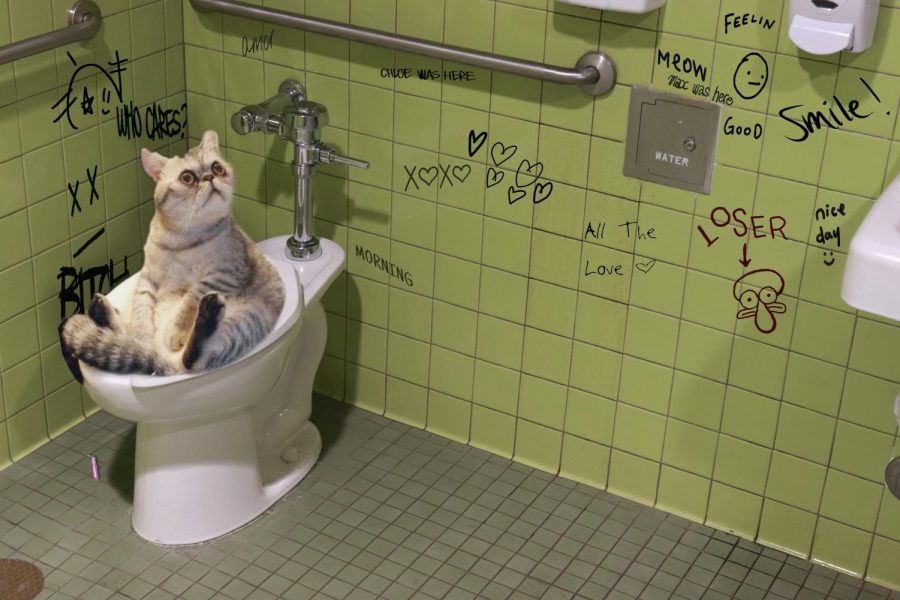Have you been interested in know-how How to Dispose of Cat Poop and Litter Without Plastic Bags?

Intro
As pet cat proprietors, it's necessary to bear in mind just how we deal with our feline good friends' waste. While it may appear convenient to purge feline poop down the bathroom, this practice can have detrimental consequences for both the atmosphere and human health and wellness.
Ecological Impact
Flushing feline poop presents dangerous microorganisms and parasites into the water supply, posing a significant risk to aquatic ecological communities. These pollutants can adversely influence marine life and compromise water top quality.
Health Risks
Along with environmental problems, purging cat waste can additionally position health dangers to people. Pet cat feces might consist of Toxoplasma gondii, a parasite that can trigger toxoplasmosis-- a possibly severe illness, particularly for expectant ladies and people with weakened immune systems.
Alternatives to Flushing
Fortunately, there are much safer and much more responsible means to throw away feline poop. Think about the adhering to choices:
1. Scoop and Dispose in Trash
The most typical method of getting rid of feline poop is to scoop it into a biodegradable bag and throw it in the trash. Make sure to utilize a dedicated trash inside story and take care of the waste immediately.
2. Use Biodegradable Litter
Opt for eco-friendly cat trash made from products such as corn or wheat. These litters are eco-friendly and can be safely disposed of in the garbage.
3. Hide in the Yard
If you have a backyard, consider burying feline waste in a designated location far from vegetable yards and water sources. Be sure to dig deep sufficient to prevent contamination of groundwater.
4. Mount a Pet Waste Disposal System
Invest in a pet garbage disposal system particularly developed for pet cat waste. These systems utilize enzymes to break down the waste, decreasing smell and ecological influence.
Conclusion
Responsible family pet possession extends past supplying food and shelter-- it likewise includes proper waste management. By avoiding purging feline poop down the toilet and opting for different disposal techniques, we can minimize our ecological footprint and protect human health and wellness.
Why You Should NEVER Flush Cat Poop (and/or Litter) Down Your Toilet
The Problem with Litter
The main function of litter is to solidify and adhere to your cat’s waste. While this makes litter excellent for collecting cat poop and urine, it’s also the exact property that makes it a nightmare when flushed down the toilet.
Cat litter can and will clog pipes. There is non-clumping litter, but it’s still quite heavy and can build up in pipes. This is true even of supposed “flushable litter.”
The problems only compound when the litter is already clumped into cat waste. Toilet paper is among the more flushable things, and even too much of that will clog a toilet.
The Problem with Cat Poop
Sewers and septic systems are designed with human waste in mind. The microbes that help break down human waste don’t work on cat waste. Additionally, cat poop plays host to the parasite Toxoplasma gondii.
When flushed, this parasite can enter the environment in places it was never meant to, posing a risk to pregnant women, their unborn children, and other people with compromised immune systems. While it might not seem possible, flushing cat poop can indeed introduce this parasite to the public water supply.
These reasons are why, even if you’ve trained your cat to go on the toilet and flush, which is possible, it’s still not a good idea. Also, pregnant women and the immunocompromised shouldn’t change litter, either.
How to Handle Litter
The best way to handle litter is to simply put it in a plastic bag and place it in the trash. Avoiding environmental risks and possible plumbing damage is worth the extra effort.
You can also invest in devices that seal away your cat’s waste in a separate compartment, so you don’t have to change the litter nearly as often. They’re also safer for pet owners because they limit the possibility of Toxoplasma gondii exposure.
Disposing of litter the old-fashioned way will ensure you won’t have to worry about any issues that flushing the waste can potentially cause.
Take Care of Clogged Pipes with Stephens Plumbing, Heating & Air Conditioning
The reasons you should never flush cat poop down your toilet are numerous, but sometimes the inevitable happens despite your best efforts.
Stephens Plumbing, Heating & Air Conditioning is ready to help if you’re experiencing litter-blocked plumbing. Whether you need us in an emergency or want to schedule regular maintenance, we’re here for you.
https://www.stephensplumbing.net/bathroom-plumbing/never-flush-cat-poop-down-your-toilet/

Do you enjoy reading up on How to Dispose of Cat Poop and Litter Without Plastic Bags? Try to leave a remark further down. We'd be delighted to find out your suggestions about this entry. In hopes that you visit us again before long. For those who enjoyed our blog posting if you please don't forget to share it. Bless you for your time. Kindly come by our site back soon.
Call Today
Comments on “Why Flushing Cat Poop Down Your Toilet Can Cause Problems - Tips for Safe Handling”